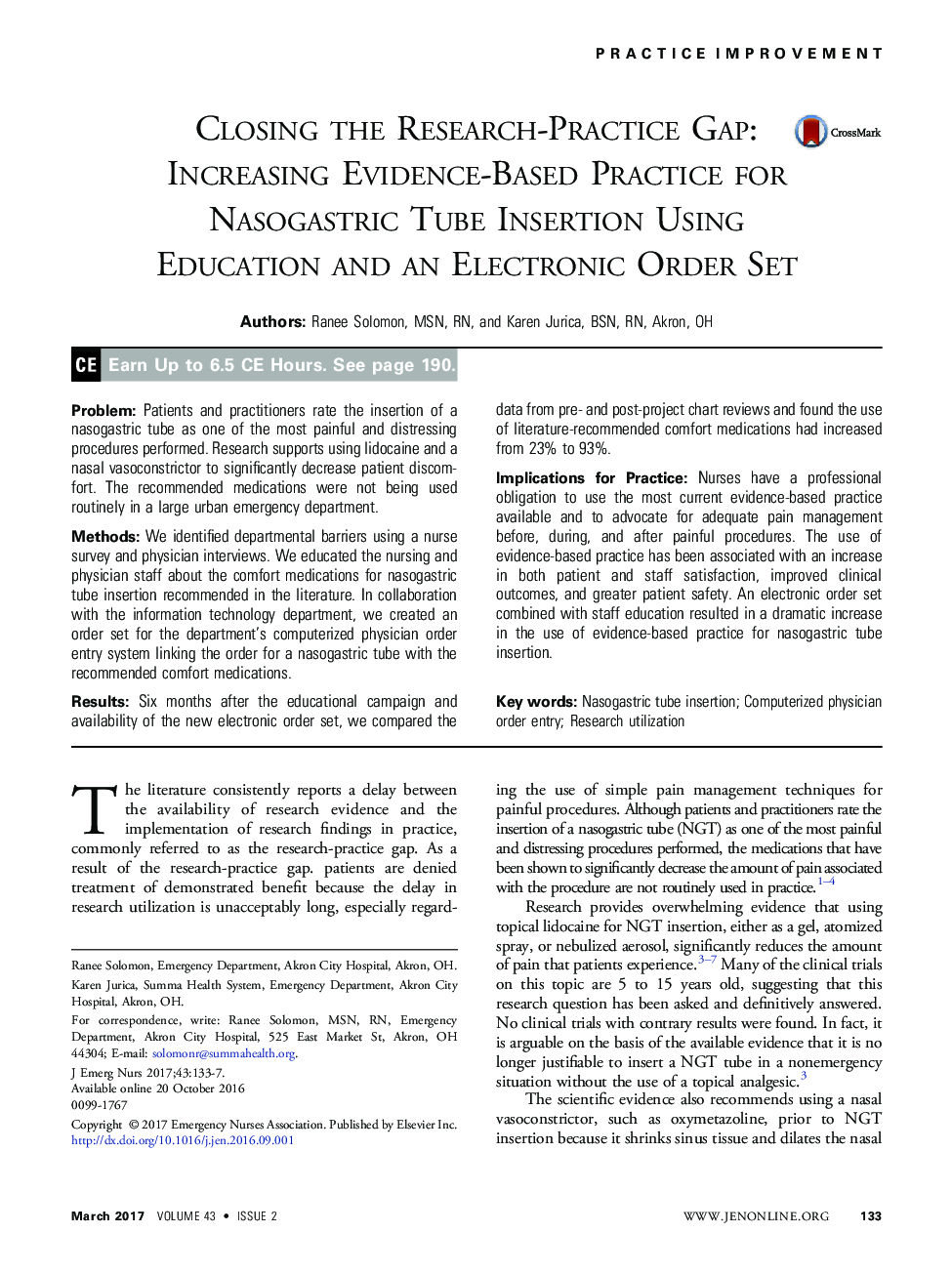| Article ID | Journal | Published Year | Pages | File Type |
|---|---|---|---|---|
| 5563220 | Journal of Emergency Nursing | 2017 | 5 Pages |
ProblemPatients and practitioners rate the insertion of a nasogastric tube as one of the most painful and distressing procedures performed. Research supports using lidocaine and a nasal vasoconstrictor to significantly decrease patient discomfort. The recommended medications were not being used routinely in a large urban emergency department.MethodsWe identified departmental barriers using a nurse survey and physician interviews. We educated the nursing and physician staff about the comfort medications for nasogastric tube insertion recommended in the literature. In collaboration with the information technology department, we created an order set for the department's computerized physician order entry system linking the order for a nasogastric tube with the recommended comfort medications.ResultsSix months after the educational campaign and availability of the new electronic order set, we compared the data from pre- and post-project chart reviews and found the use of literature-recommended comfort medications had increased from 23% to 93%.Implications for PracticeNurses have a professional obligation to use the most current evidence-based practice available and to advocate for adequate pain management before, during, and after painful procedures. The use of evidence-based practice has been associated with an increase in both patient and staff satisfaction, improved clinical outcomes, and greater patient safety. An electronic order set combined with staff education resulted in a dramatic increase in the use of evidence-based practice for nasogastric tube insertion.
